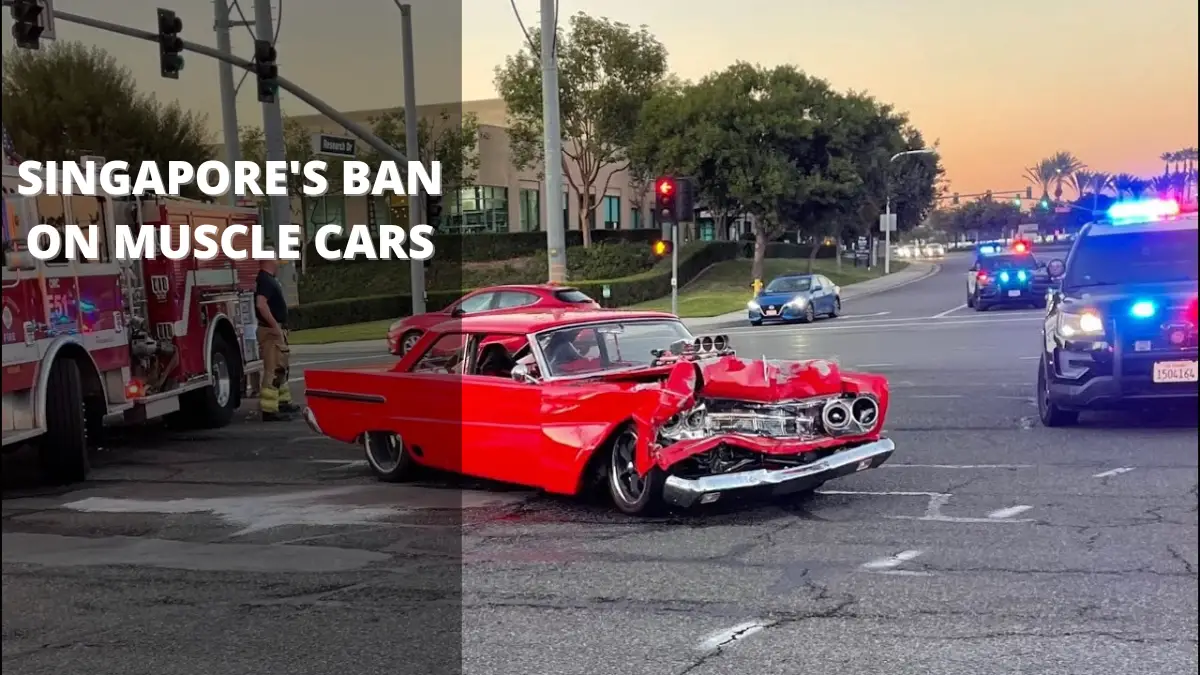Muscle cars have always been a symbol of raw power and performance, captivating car enthusiasts all over the world with their aggressive designs and powerful engines. However, not every country welcomes these high-performance vehicles with open arms.
Singapore, for instance, has stringent regulations in place that make owning and driving muscle cars a distant dream for its residents. In this article, we will explore the reasons behind Singapore’s ban on muscle cars and its implications on the local automotive market.
Simply put, muscle cars are not allowed in Singapore due to strict emissions regulations, high taxes, and the city-state’s focus on promoting a greener environment. Let’s delve deeper into these factors and their impact on the automotive landscape in Singapore.
Strict Emissions Regulations
Euro Standards
Singapore has adopted the European Union’s stringent Euro emission standards, which are designed to reduce harmful pollutants emitted by vehicles. Muscle cars, known for their high-performance engines, typically have higher emissions compared to more fuel-efficient cars.
As a result, many muscle cars do not meet the strict requirements set forth by these standards and are therefore not allowed in Singapore.
Vehicular Emissions Scheme (VES)
In addition to the Euro standards, Singapore has implemented the Vehicular Emissions Scheme (VES) to further control vehicle emissions. The VES assigns a band (A to C) to each car based on its emissions levels, with ‘A’ being the cleanest and ‘C’ being the most polluting.
Cars in higher bands are subjected to additional taxes, making them significantly more expensive to own. Muscle cars, due to their higher emissions, often fall into the ‘C’ band, discouraging potential owners due to the added financial burden.
High Taxes and Ownership Costs
Additional Registration Fee (ARF)
Singapore imposes an Additional Registration Fee (ARF) on all vehicles, calculated as a percentage of the car’s Open Market Value (OMV). The ARF rate increases as the OMV increases, making high-performance vehicles, like muscle cars, substantially more expensive to purchase.
Certificate of Entitlement (COE)
Another factor contributing to the high cost of owning a muscle car in Singapore is the Certificate of Entitlement (COE). The COE is a license that allows vehicle ownership for a period of 10 years, after which it must be renewed or the car must be scrapped.
The COE price is determined through a bidding process, and high demand often results in skyrocketing prices. Muscle car enthusiasts are likely deterred by the exorbitant costs associated with obtaining a COE for their vehicle.
Promoting a Greener Environment
Green Vehicle Rebates
Singapore’s government is committed to promoting environmentally friendly transportation. To encourage the adoption of greener vehicles, the city-state offers rebates and incentives for electric, hybrid, and other low-emission vehicles. These incentives make eco-friendly cars more financially attractive, further discouraging the purchase of muscle cars with their higher emissions and fuel consumption.
Infrastructure Development
Singapore is also investing in infrastructure to support electric vehicles (EVs), with plans to significantly increase the number of EV charging stations in the coming years.
This move towards greener transportation options showcases the country’s commitment to environmental sustainability and further highlights the unlikelihood of muscle cars gaining traction in Singapore.
Conclusion
In summary, muscle cars are not allowed in Singapore due to a combination of factors, including stringent emissions regulations, high taxes, and the city-state’s focus on promoting a greener environment. T
hese restrictions ensure that Singapore’s roads remain populated with more fuel-efficient and environmentally friendly vehicles, aligning with the country’s long-term sustainability goals.


